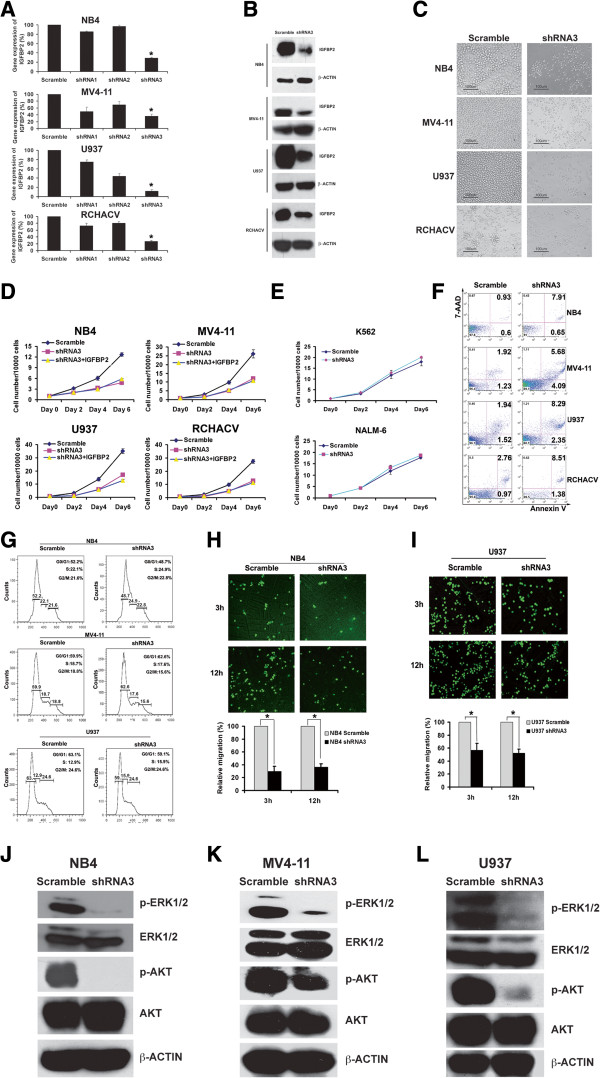Figure 2.
IGFBP2 is critical for survival and migration of human AML cells. (A) IGFBP2 mRNA expression was reduced in four human leukemia cell lines by shRNA3 as determined by real-time RT-PCR (n = 3). * significant different from scramble control values, p < 0.05. (B) IGFBP2 levels were reduced in four human leukemia cell lines by shRNA3 as determined by western blotting (n = 3). (C) Inhibition of IGFBP2 expression with shRNA3 in four human leukemia cell lines that have high IGFBP2 levels decreased cell growth in culture (n = 3). (D) Effects of inhibition of IGFBP2 expression with shRNA3 cannot be rescued by extrinsic recombinant IGFBP2 protein (500 ng/ml) (n = 3). (E) Inhibition of IGFBP2 expression with shRNA3 in two human leukemia cell lines that have low IGFBP2 levels did not decrease cell growth in culture (n = 3). (F) Inhibition of IGFBP2 expression with shRNA3 in four human leukemia cell lines that have high IGFBP2 levels induced apoptosis as determined by Annexin v and 7-AAD staining in flow cytometry. (G) Inhibition of IGFBP2 expression with shRNA3 did not induce cell cycle arrest in AML cell lines as determined by propidium iodide staining and analysis by flow cytometry. (H-I) Inhibition of IGFBP2 expression with shRNA3 suppressed NB4 and U937 cell migration. Indicated cells transduced with scrambled shRNA or shRNA3 were placed in the upper chamber of a transwell insert (5-μm pore size). Cells were allowed to migrate for 3 or 12 hours at 37°C before harvesting and analysis (n = 3; ** p < 0.01). The migration was normalized by the cell numbers at 12 hr. (J-L) Inhibition of IGFBP2 expression with shRNA3 decreased the activation of ERK and AKT in NB4, MV4-11, and U937 cell lines.

